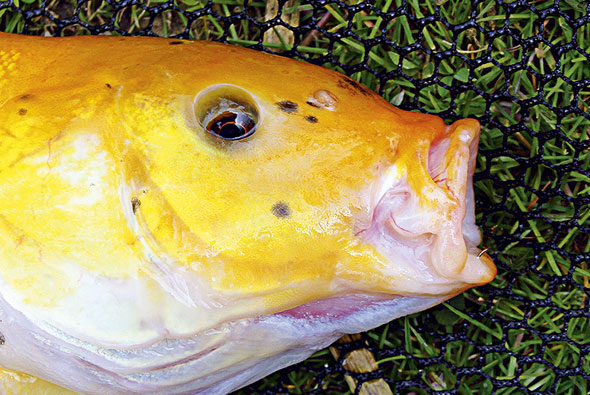Understanding how fish feed
Fish mouths differ among species. Knowing how they work helps us catch.
Successful angling is often all about understanding how and when fish feed. If we understand how fish actually take bait into their mouths we can better prepare and present the baits designed to catch them.
Our coarse fish have quite a variety of different methods of taking in food, and so different bait types work for different species of fish. They also have different adaptations to help them take in food. You may have noticed some fish have mouths which telescope out – like carp – while in others such as pike this is not so obvious. However, all fish when feeding form their mouths into a tube shape to get the food in.
To do this they have evolved a really complex set of bones, tendons and ligaments. These all work together to allow the fish to feed more effectively. By simply looking at a fish it would be difficult to see how complex it all is but a fish skeleton reveals all. One of the fundamental problems that all fish have to overcome is how to actually get the food into their mouths. This isn’t as simple as you might first think. The problem is a simple one – the food is in or on the water and the fish’s mouth is also full of water! So how do they encourage the food to move into their mouths?
Most fish use suction as the main method. By sucking in the water around their mouths the food is also taken in. To generate the suction they do two things. First, they expand the inside of their mouths and their gill covers. This creates an enlarged space inside the mouth. The edges of the gill covers remain sealed against the body so the only way the water can get in to fill this new space is through the mouth.
Some fish such as carp are very good at this and enhance the effect by having mouths which protrude in a long tube. However, it’s not simply forming the right type of tube with their mouths that makes this work. The power of the mouth pump itself is very important and this is due to the size of the gill covers and how the inside of the mouth is set up. Carp have a very powerful pump which is very effective at sucking in food from very deep sediment.
So the shape of the mouth and the pump creates a directionally focused water current where the food is taken. It also allows them to dig down into sand and mud and suck up food items buried quite deep.
Fish can also reverse the water flow and so blast water into the soft sediment to reveal food hidden underneath. It also allows the fish to extend its mouth to pick up food away from its head. This form of feeding is very common in carp and gives the characteristic ‘blows’ seen in shallow water as the sediment is blasted from the bottom by the carp.
One of the main reasons for using a hair rig is that carp are very good at blowing stuff back out of their mouths if they don’t like it. So a normal bait, with very little of the hook showing, can be blown back out without hooking the fish. The fish has sucked in the bait and blown it out before you’ve had a chance to strike! But, with a hair rig, the hook is free to make contact as it’s on its way out!
Fish that don’t have protruding mouths have to get much closer to their food before they can suck it in. Carp are certainly the best at digging down into the bottom ooze with tench and bream next.
Carp and fish related to them have a special filtering mechanism at the very back of their mouths called the palatine organ that allows the fish to sort out food from the mud and stones they suck up.
This, however, isn’t the only way that fish can get food into their mouths. Perch, for instance, can rely on a very strong suction and large mouths to suck in their prey. This draws in the prey to the back of their mouths where it can be trapped. This very powerful suction is enhanced by large gill covers as well. They can also engulf their prey, accelerating quickly and opening their mouths at the last second. The perch flares its gills open at the same time to allow water to flush straight through the mouth as the prey is swept along with it. Many anglers will have noticed that perch will often be hooked towards the back of the throat because they suck the bait up so strongly.
So knowing how fish feed helps us present baits in the best ways to catch them.
Suck and blow - How fish feed
Bream have smalls mouths that extend to form a suction tube
Carp have large mouth openings that telescope to boost suction
Tench also dig for food by blowing away soft sediments





